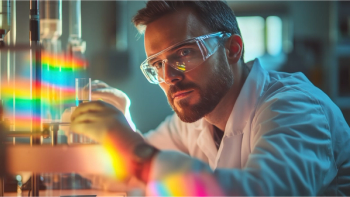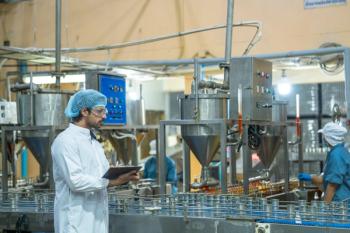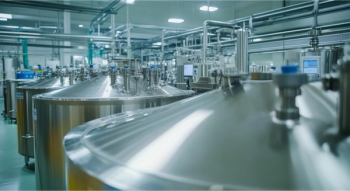
Regulatory Barriers: Unlocking Near-Infrared Spectroscopy’s Potential in Food Analysis
Despite its widespread adoption in food quality analysis, near-infrared (NIR) spectroscopy lags behind in regulatory recognition. A study led by researchers from Italy and Spain highlights the disparity between its scientific applications and official methods, urging standardized regulations to fully leverage NIR's sustainability benefits.
In the dynamic landscape of food production, rapid and precise analysis is paramount for ensuring quality, authenticity, and safety. Near-infrared spectroscopy (NIR), a non-destructive analytical method, has gained prominence due to its speed, environmental benefits, and versatility (1–3). However, its integration into official regulatory frameworks remains limited, with only 25 internationally recognized analytical method documents addressing its application. A study by Giacomo Squeo, Davide De Angelis, and Francesco Caponio (University of Bari Aldo Moro, Italy), Jordi Cruz (Escola Universitària Salesiana de Sarrià, Spain), and José M. Amigo (IKERBASQUE and University of the Basque Country, Spain) critically examines this gap and proposes pathways for broader acceptance. The study, published in the journal Current Opinion in Food Science, serves as both a critique of current limitations and a roadmap for unlocking NIR spectroscopy's full potential (1).
The Power and Potential of NIR Spectroscopy
NIR spectroscopy analyzes electromagnetic vibrations in the 800–2500 nm range, producing spectra that reveal the chemical composition of samples. Chemometric tools, often powered by machine learning, enable the extraction of actionable insights from these spectra. This technology has been transformative in food sectors, from raw material sorting to process monitoring, offering faster and more sustainable alternatives to traditional chemical analyses.
Applications include determining protein, fat, and moisture content in grains and oils, analyzing alcohol levels in beverages, and assessing wheat hardness—a physical parameter vital for food manufacturing. Yet, the method's full potential is hindered by the lack of harmonized official standards (1–3).
Current NIR Regulatory Landscape
The study identifies only 25 official NIR spectroscopy documents, primarily published by the American Association of Cereal Chemists (AACC), the American Oil Chemists’ Society (AOCS), and the International Standards Organization (ISO). These include eight guidelines focused on best practices for sampling and spectral acquisition, and 17 standardized procedures for specific food categories (1). For example, ISO guidelines like ISO 21543:2020 provide standards for milk and dairy analysis in on-line environments, while AACC methods address parameters such as wheat hardness. However, these efforts pale in comparison to the surge in NIR research, which exceeds 60 published studies annually (1).
Barriers to Broader NIR Adoption
The authors highlight critical obstacles preventing widespread regulatory adoption of NIR methods (1):
- Compliance with Concentration Thresholds: Existing regulations for compound concentrations must align with NIR capabilities.
- Analytical Validation: Comprehensive validation of NIR's analytical reliability, including sensitivity and detection limits, is essential.
- Chemometric Rigor: Multivariate models must demonstrate reproducibility and reliability through exhaustive testing.
- Causality in Correlations: A clear understanding of the physical and chemical basis of NIR correlations is necessary to ensure robust predictions.
Without addressing these challenges, the benefits of NIR—such as sustainability and real-time monitoring—cannot be fully realized (1).
Call to Action for Researchers and Regulators
The study urges scientists, industry stakeholders, and regulatory bodies to prioritize the standardization of NIR spectroscopy methods. The authors propose that achieving regulatory recognition would catalyze further innovation, enhance food safety, and improve resource efficiency (1).
By bridging the gap between cutting-edge research and official standards, NIR spectroscopy could transform food quality control, aligning with sustainability goals and the paradigms of Industry 4.0 and 5.0. As the authors emphasize, "NIR spectroscopy is more than a technological tool—it is a cornerstone of modern food analysis, awaiting its rightful place in the regulatory framework” (1).
This collaborative research underscores the importance of establishing comprehensive guidelines to integrate NIR spectroscopy into the fabric of food regulation. As the industry evolves, standardizing NIR applications will not only address current asymmetries but also pave the way for a more sustainable and innovative future in food production (1).
References
(1) Squeo, G.; Cruz, J.; De Angelis, D.; Caponio, F.; Amigo, J. M. Considerations About the Gap Between Research in Near Infrared Spectroscopy and Official Methods and Recommendations of Analysis in Foods. Curr. Opin. Food Sci. 2024, 59, 101203. DOI:
(2) Grassi, S.; and Alamprese, C. Advances in NIR Spectroscopy Applied to Process Analytical Technology in Food Industries. Curr. Opin. Food Sci. 2018, 22, 17–21. DOI:
(3) Cozzolino, D. The Ability of Near Infrared (NIR) Spectroscopy to Predict Functional Properties in Foods: Challenges and Opportunities. Molecules 2021, 26 (22), 6981. DOI:
Newsletter
Get essential updates on the latest spectroscopy technologies, regulatory standards, and best practices—subscribe today to Spectroscopy.




